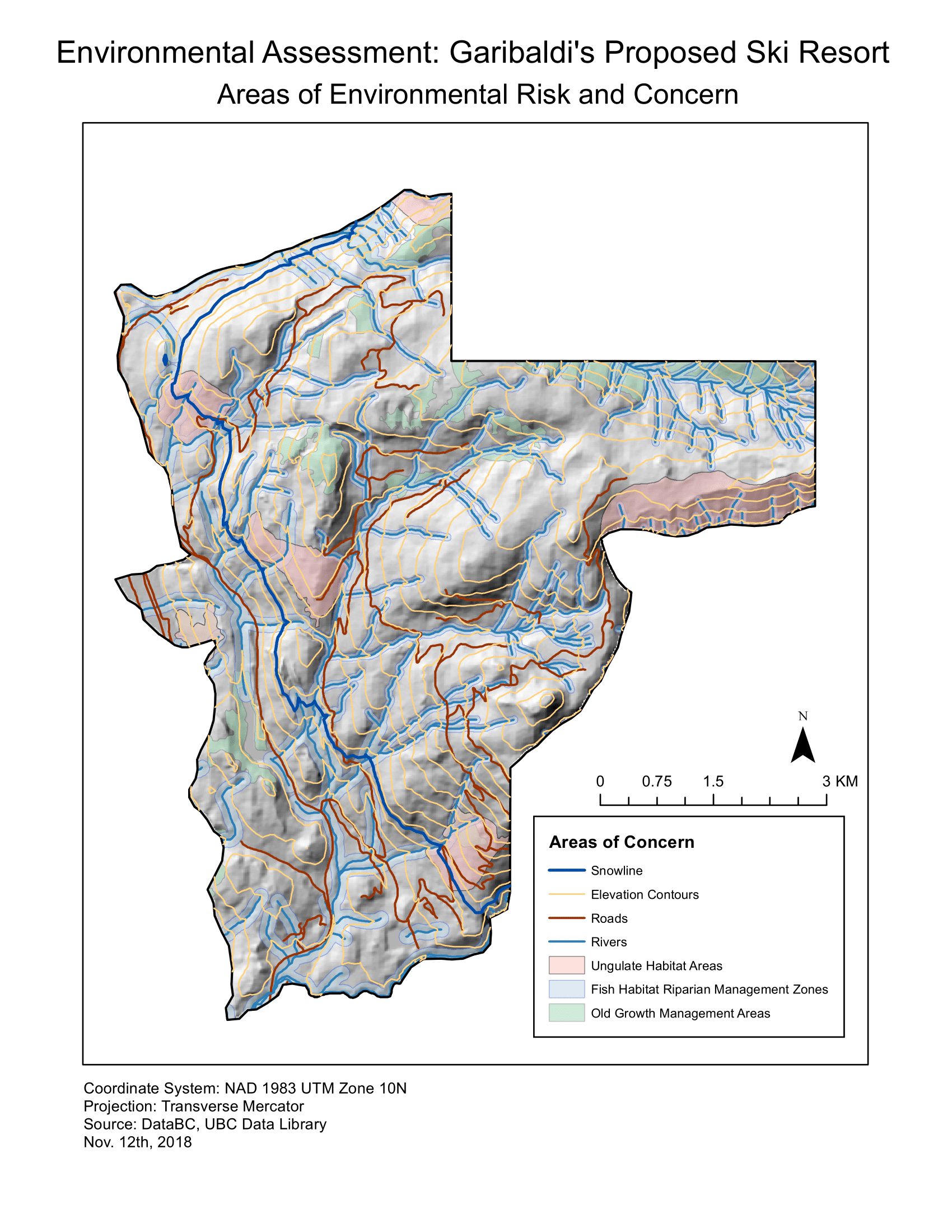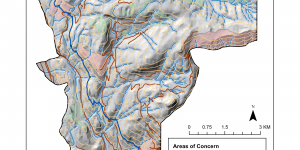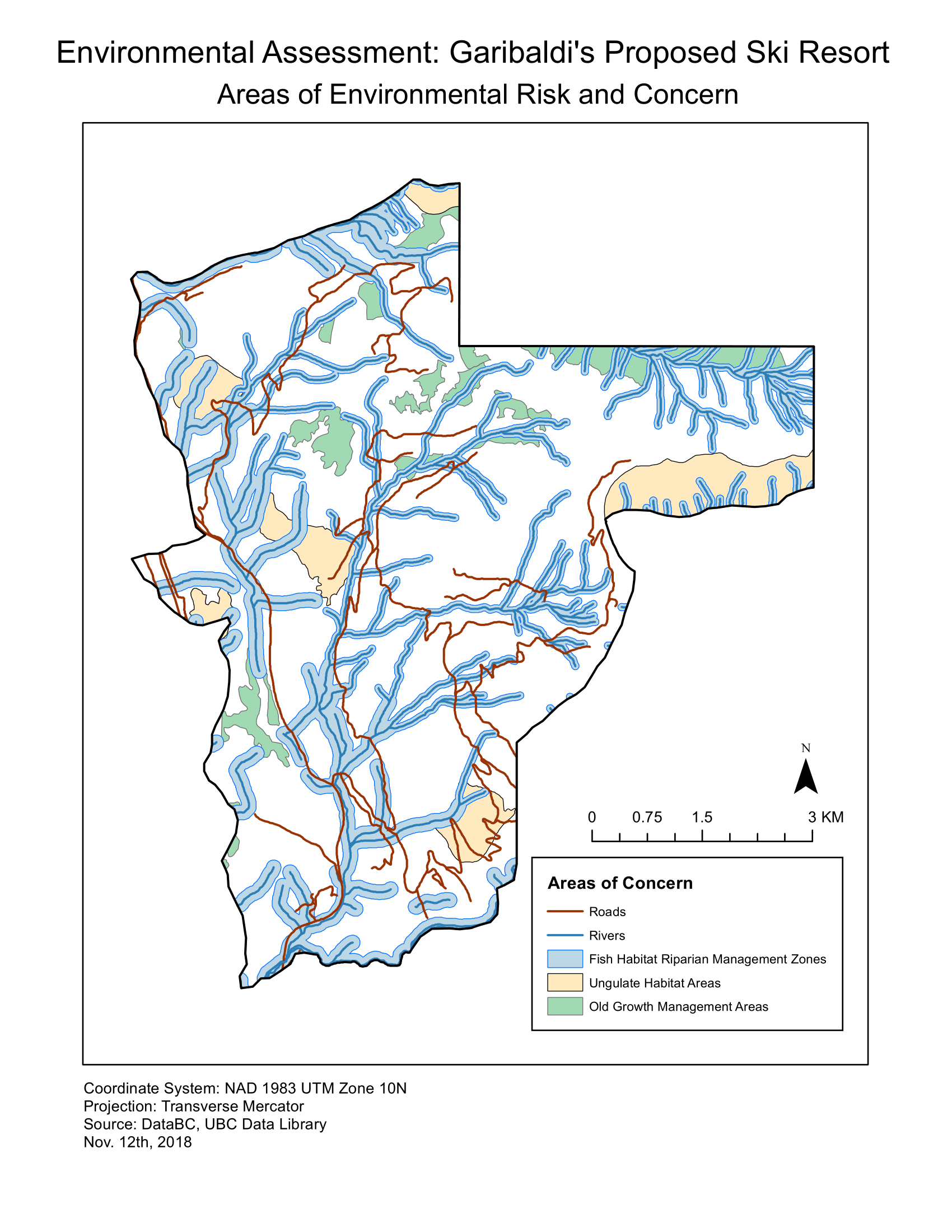About the Project
The Garibaldi at Squamish project is a $3.5 billion proposed development plan for an all-year mountain resort at Brohm Ridge. Located just 15 kilometres north of Squamish, the proposed ski resort is to cover an area of 54,696,641 sqm, or 2,759 hectares. Although this carries the potential of providing jobs and boosting the local economy, it has not been without strong pushbacks primarily concerned with effects on vegetation and wildlife, especially with climate change and economic viability in mind. As a result, I have conducted an environmental impact assessment as a natural resource planner, particularly looking at three areas of concern: old growth management areas (OGMA), winter habitat ranges of ungulate species (UWR) and fish habitat riparian management zones (FHRMZ). Recommendations have also been made and must be addressed as the project progresses.
HERE ARE SOME TASKS/SKILLS I PERFORMED:
- Acquired, parsed and filtered geospatial resource datasets to enable more concise, efficient and effective analyses
- Reclassified Digital Elevation Model (DEM) based on elevation to identify appropriate land for sufficient snow accumulation
- Queried using the Select by Attribute tool to identify areas of environmental concern
- Analyzed feature areas to understand the scope and magnitude of potential impacts
- Produced an environmental assessment and 3D hillshade map to display my findings

Conducting an Environmental Impact Assessment with GIS
I found this assignment to be particularly challenging rewarding because it was my first experience using many critical GIS analytical techniques such as proximity buffer, union, clip, and overlays. This gave me a taste of what can be done with GIS and highlighted the importance of keeping your data organized, as well as the far reaching extent to which GIS can be used to give insights on the impacts of projects and how they may be mitigated.
Findings from the Geospatial Analyses
The Garibaldi at Squamish proposed ski resort has already received environmental approval from the provincial government and may begin its construction in less than five years. However, the environmental approval was granted with over 40 legally binding conditions, many of which pertain to the protection of ecologically sensitive areas and species (Ritchie, 2018). As a result, the areas of particular environmental concern has been identified in the table below.
| Point of Environmental Concern | Area of Environmental Concern (sqm) | Area within Project (%) |
| Old Growth Management Areas | 3,710,331 | 6.8 |
| Winter Habitat Ranges of Ungulate Species | 4,315,159 | 7.9 |
| Fish Habitat Riparian Management Zones | 15,333,054 | 28.0 |
Overall, protected areas within the proposed project boundary comprises 38% of the proposed project area and therefore, pose significant challenges to the project’s development. Conversely, the realization of this project carries the critical potential of incurring irreversible damage to the livelihoods of these species and those that rely on them.

However, with climate change in mind, the economic and practical feasibility of this project has also been questioned. As a result, I conducted an analysis assuming a snowline at the elevation of 555m shown in the map above, with areas below this level to be deemed unfit for skiing due to the lack of snow accumulation. Overall, it was found that 16,371,095 sqm of the proposed project boundary fell below the snowline, rendering 30% of the development plan to be inadequate for its winter purpose. As global temperatures continue to rise, snow seasons may be shortened while the snowline may shift to higher elevations, resulting in greater areas to be unfit for use.
Project Recommendations
In order to maintain its environmental certificate of approval, the Garibaldi at Squamish Inc. must find ways to work within the 40 conditions attached, while adequately responding to the climatological changes of the area. Therefore, I would recommend the following: 1) restrict project areas to areas of higher elevation, 2) shorten vertical run lengths, and 3) re-evaluate the viability of the project.
As the accumulation of snow becomes more unpredictable and potentially restricted to the upper-reaches of the park, I suggest lifts and trails to be made only at areas of higher areas of elevation. Furthermore, any trails that do get created must be shortened in its vertical length, so as to not impede on any protected areas. However, restricting the length and area of the park will have an effect on the resort’s revenue stream, as well as operating costs. Taking into account the fact that this project will take 20 years to complete, my final suggestion for Garibaldi at Squamish Inc. is to re-evaluate the economic, environmental, and social long-term viability and sustainability, with factors such as housing affordability, construction and operation emissions, water supply, increased traffic, ecosystem services and food web implications all taken into account.


